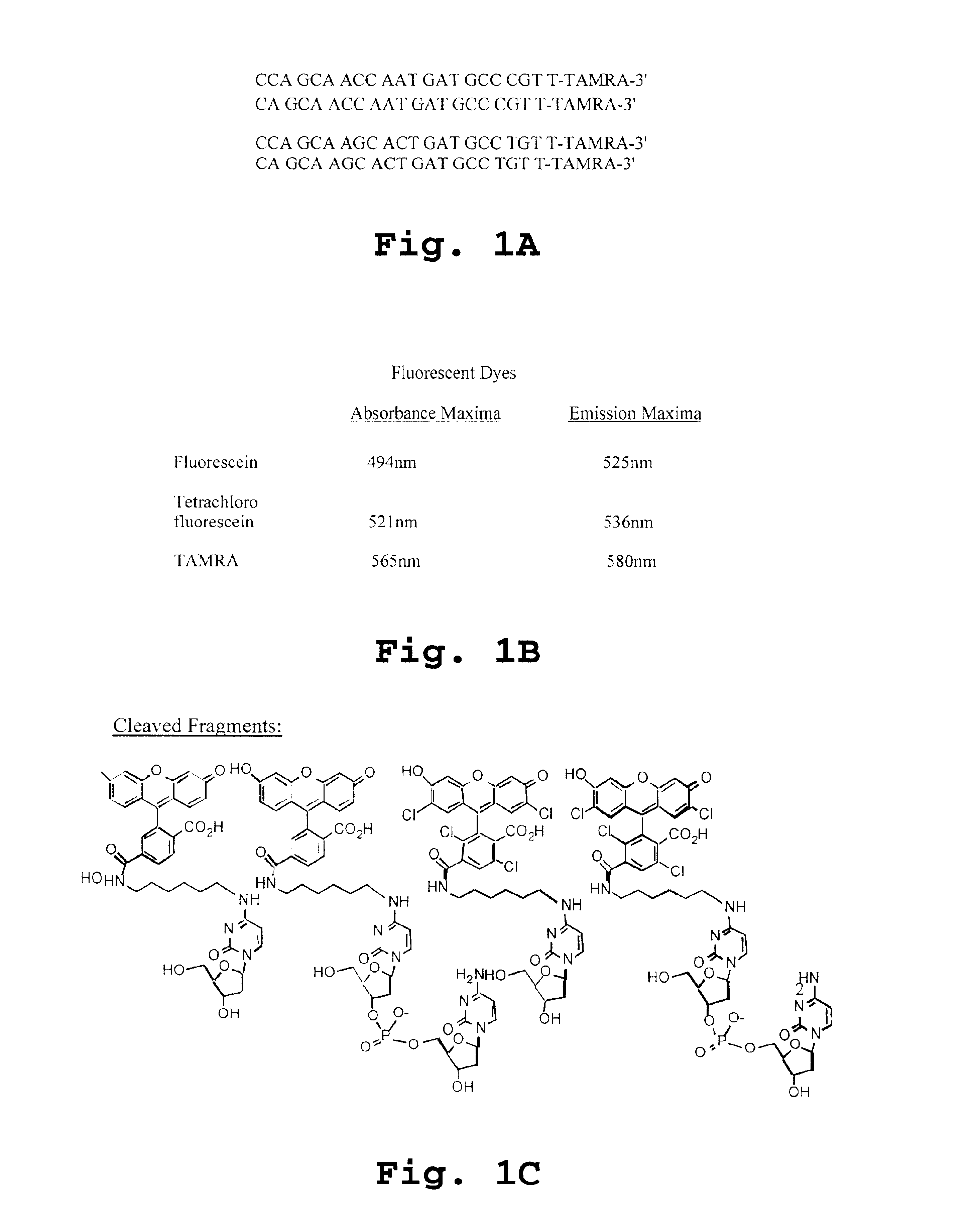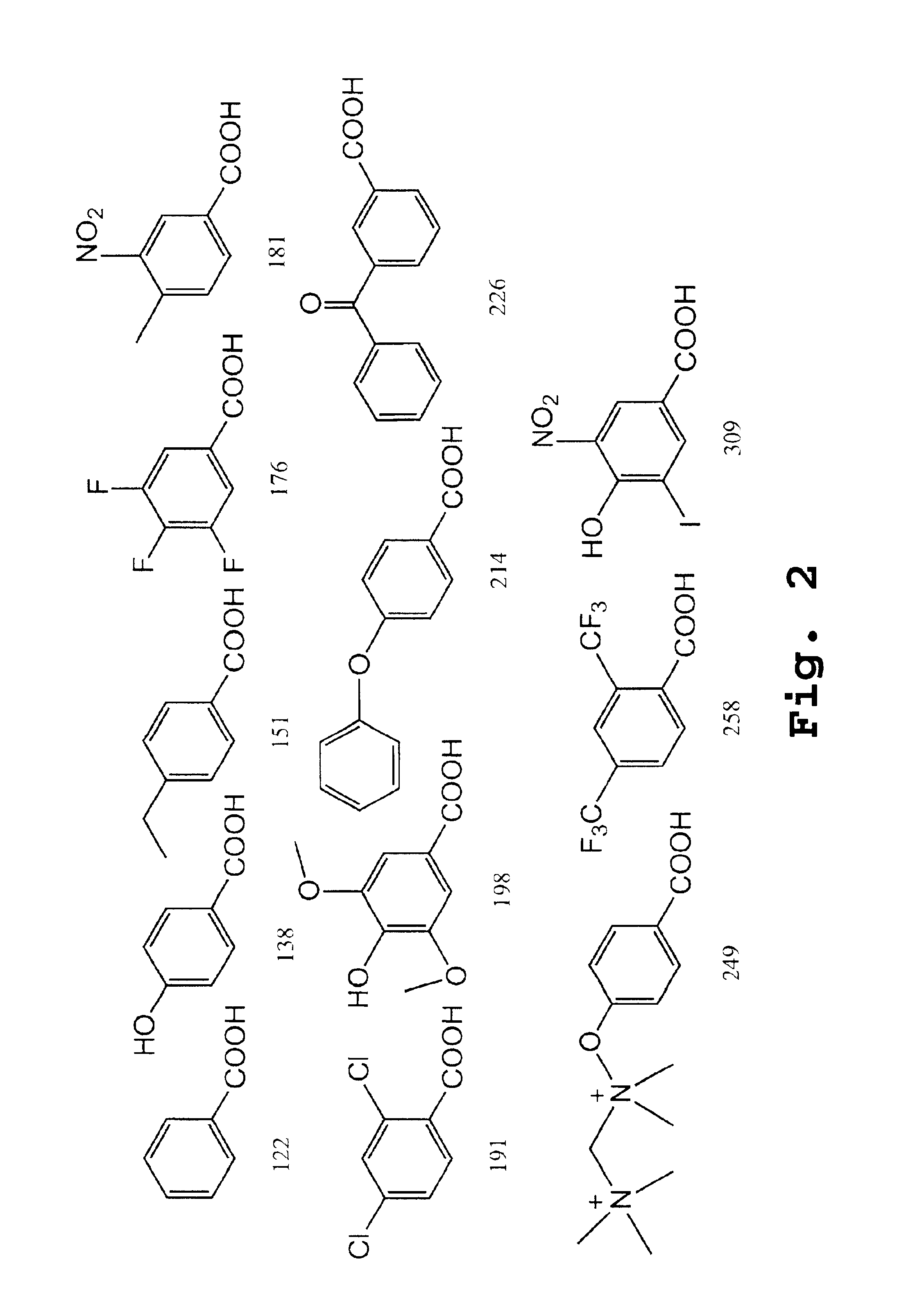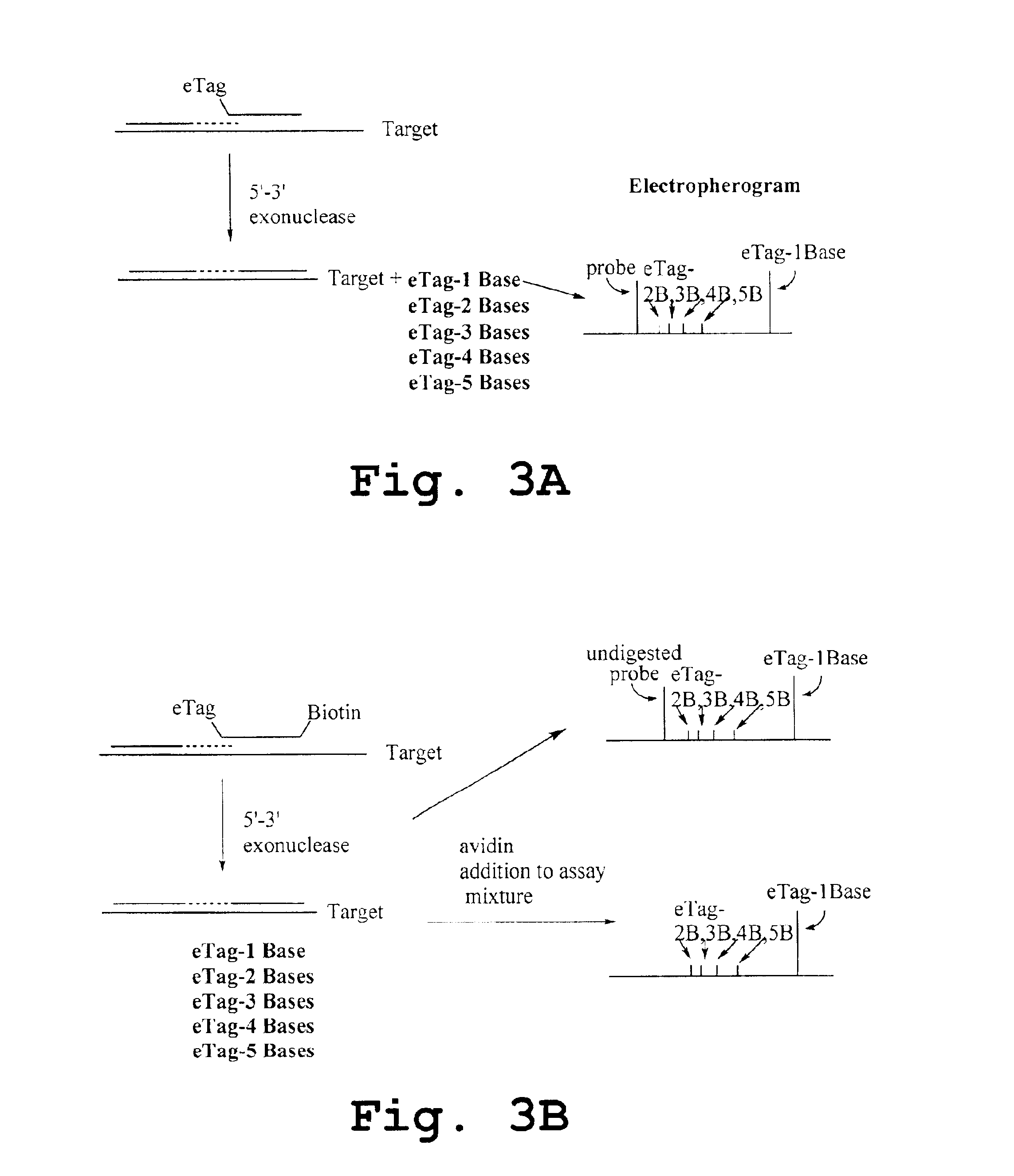Kits employing generalized target-binding e-tag probes
a technology of target-binding e-tag and probe, which is applied in the field of kits employing generalized target-binding e-tag probes, can solve the problems of high cost of arrays, confounding the accuracy of genetic information, and expensive synthesizing
- Summary
- Abstract
- Description
- Claims
- Application Information
AI Technical Summary
Benefits of technology
Problems solved by technology
Method used
Image
Examples
example 1
Singleplex Amplifications of Allele 1 and Allele 2
[0386]The experiment was set up to run in the following fashion (6 samples, a triplicate for Allele 1 and another triplicate for Allele-2):[0387]22 μL of Mastermix[0388]13 μL of probes and primers (both the probes are present)[0389]4.0 μL of Allele-1 or Allele-2[0390]11 μL of buffer (10 mM Tris-HCl, 1 mM EDTA, pH 8.0)
Allele 1 was labeled with tetrachloro fluorescein (TET), and Allele 2 was labeled with fluorescein (FAM), each having characteristics as set forth in FIG. 1B.
[0391]The above volumes were added to a PCR tubes and the reaction mixtures were cycled on a Gene Amp® system 9600 thermal cycler (Perkin Elmer) as follows:[0392]50° C.; 2 MIN (for optimal AmpErase UNG activity)[0393]96° C.; 10 MIN (required to activate AmpliTaq Gold DNA Polymerase)[0394]40 cycles of:[0395]95° C.; 15 SEC[0396]60° C.; 60 SEC[0397]70° C.; 10 MIN[0398]4° C.; storage
[0399]Results from experiments with Allele-1 are shown in FIGS. 18A and B: CE separation...
example 2
A Multiplexed Reaction with Both Allele 1 and Allele 2 Present in Equal Ratio
[0401]The experiment was set up in the following fashion (3 reaction tubes, a triplicate):[0402]22 μL of Mastermix[0403]13 μL of probes and primers (both of the probes were present)[0404]4.0 μL of Allele-1[0405]4.0 μL of Allele-2[0406]7 μL of buffer (10 mM Tris-HCl, 1 mM EDTA, pH 8.0)
The above volumes were added to a PCR tubes and the reaction mixtures were cycled on a Gene Amp® system 9600 thermal cycler (Perkin Elmer) as follows:[0407]50° C.; 2 MIN (for optimal AmpErase UNG activity)[0408]96° C.; 10 MIN (required to activate AmpliTaq Gold DNA Polymerase)[0409]40 cycles of:[0410]95° C.; 15 SEC[0411]60° C.; 60 SEC[0412]70° C.; 10 MIN[0413]4° C.; storage
[0414]The results are shown in FIG. 20: CE separation of a 1:1 mixture of the 40 cycles products of Alleles 1 and 2. Experimental conditions were as given above for the experiments of FIG. 18.
example 3
A Multiplexed Reaction with Both Allele 1 and Allele 2 where Allele 1 is 10 Times More Concentrated than Allele 2
[0415]The experiment was set up in the following fashion (3 reaction tubes, a triplicate):[0416]22 μL of Mastermix[0417]13 μL of probes and primers (both the probes were present)[0418]5.0 μL of Allele 1[0419]0.5 μL of Allele 2[0420]9.5 μL of buffer (10 mM Tris-HCl, 11 mM EDTA, pH 8.0)
The above volumes were added to a PCR tubes and the reaction mixtures were cycled on a Gene Amp® system 9600 thermal cycler (Perkin Elmer) as follows:[0421]50° C.; 2 MIN (for optimal AmpErase UNG activity)[0422]96 C; 10 MIN (required to activate AmpliTaq Gold DNA Polymerase)[0423]40 cycles of:[0424]95° C.; 15 SEC[0425]60° C.; 60 SEC[0426]70C; 10 MIN[0427]4 C; storage
[0428]The results are shown in FIG. 21: CE separation of a 1:10 mixture of the 40 cycles products of Alleles 1 and 2. Experimental conditions were as given for the experiments of FIG. 18.
PUM
| Property | Measurement | Unit |
|---|---|---|
| charge/mass ratio | aaaaa | aaaaa |
| temperature | aaaaa | aaaaa |
| charge/mass ratio | aaaaa | aaaaa |
Abstract
Description
Claims
Application Information
 Login to View More
Login to View More - R&D
- Intellectual Property
- Life Sciences
- Materials
- Tech Scout
- Unparalleled Data Quality
- Higher Quality Content
- 60% Fewer Hallucinations
Browse by: Latest US Patents, China's latest patents, Technical Efficacy Thesaurus, Application Domain, Technology Topic, Popular Technical Reports.
© 2025 PatSnap. All rights reserved.Legal|Privacy policy|Modern Slavery Act Transparency Statement|Sitemap|About US| Contact US: help@patsnap.com



